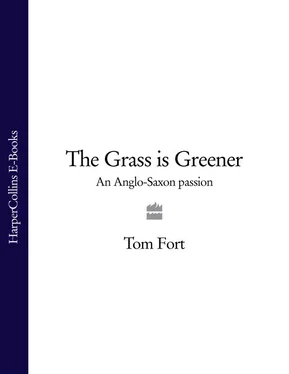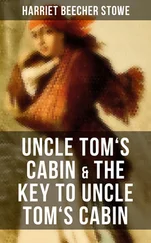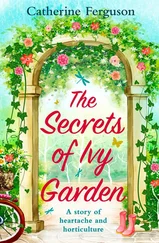Pope seems to have been a genuinely dedicated and expert gardener. Bridgeman worked with him at Twickenham. Burlington was his friend. William Kent, the instrument of Burlington’s Palladian ambitions, may have lent a hand. When Pope proclaimed a view of what men of taste should be doing with their money, men of taste listened. When he put the boot into those he decreed were without taste, his victims and their schemes were derided. This he did to Chandos and his folly at Canons:
His gardens next your admiration call,
On any side you look, behold the wall!
No pleasing intricacies intervene,
No artful wildness to perplex the scene;
Grove nods at grove, each alley has a brother,
And half the platform just reflects the other.
One can sense the stunted draper’s son, his pen mightier than any purse, almost hopping with delight as each dart is dispatched; and imagine His Grace, hopping in pain and shame as they land, all his wealth and influence counting for naught.
Pope’s pleasure in the science and art of gardening, and his eagerness to advertise his opinions on aesthetic sensibility, make him much cherished by gardening historians. He is seen as bringing down the curtain on the sterile excesses of the recent past, and raising it to reveal the new domain of the landscape architect. His own garden extended over no more than five acres. But his imagination helped shape much grander ambitions – among them Burlington’s recreation in Chiswick of the sunlit, temple-strewn classical landscapes of Poussin and Claude Lorrain. It created that stage for William Kent, who – in Horace Walpole’s phrase – ‘leaped the fence and saw that all Nature was a garden’.
Kent and his noble patron had no interest in gardening from the point of view of growing things. To them the creation of the garden was a species of architecture, its purpose to realize the classical paradise. At Chiswick, the focus was on the temples and pavilions, copied from designs by Palladio, each deposited on its own eminence, to be approached by its attendant alleys. Shrubs and flower beds were distractions. What mattered was the scene. Its permitted elements were buildings, clipped hedges, standings of trees, lawns and water, as often as not surmounted by the sort of old bridge Lars Porsena of Clusium is remembered for.
All this was very fine if you happened to be an idle earl with an obsession with Italianate landscapes and a bottomless exchequer; or, indeed, a poet with clear notions of beauty and a prime site in a select London suburb to realize them. But lesser men – of substance, but without an original idea about gardening in their heads – needed practical instruction. They were not for leaping fences and embracing Nature. They had some land, and limited budgets, and they wished to know how to get the best out of both. They may well have studied John James, or – if touched by intimations of changing fashion – either Stephen Switzer’s The Nobleman, Gentleman, and Gardener’s Recreation (first published in 1715) or Batty Langley’s New Principles of Gardening (1728).
These dusty old volumes are useful to the chronicler, as reflections of the tastes of the age. But it would be idle to pretend that either could be read today for profit or amusement. Langley’s is considerably the more tedious, a Georgian equivalent to the collected works of Doctor Hessayon, without the jokes. Both Langley and Switzer adopted, to limited degrees, the new attitudes; Langley in his disapproval of topiary and ornate parterres, Switzer in his espousal of the ‘twistings and twinings of Nature’s lines’. And both showed a proper appreciation of the importance of cultivated grass. ‘The grand front of a building should be open upon an elegant lawn or plain of grass,’ instructs Langley. It should have no borders cut into it, ‘for the grandeur of those beautiful carpets consists in their native plainness’. It should be adorned with beautiful statues, he says, and ‘terminated in its sides’ with groves. A great range of suitable classical notabilities is recommended, among them Mars, Jupiter, Venus, Apollo, the Nine Muses, Priapus, Bellona, Pytho and Vesta. But on how to produce the ‘beautiful carpet’ to show off the gods and goddesses to best advantage, he is largely silent.
Switzer is slightly more helpful. His tips are borrowed from John James: plenty of mould ‘to keep an agreeable verdure upon all your carpet walks’, plenty of ‘rowling, mowing and cleansing’ to keep the ‘daisies, plantains, mouse-ear and other large growing herbs at bay’. He advises that the seed should be chosen from those pastures where the grass is ‘naturally fine and clear’ – wherever they may be found – ‘otherwise you will entail a prodigious trouble on the keeping of Spiry and Benty Grass, as we commonly call it, which cuts extremely bad and scarcely ever looks handsome’.
We have little idea how much attention was paid to these exhortations. Switzer’s and Langley’s books sold well, going through numerous editions. One or other, or both, must have been found on the shelves of a goodly proportion of the country houses which, with their surrounding parks, were sprouting across the land. We know from the correspondence between William Shenstone – who created one of the most celebrated gardens of the age at his home, The Leasowes, near Birmingham – and his friend Lady Luxborough, that he lent her Langley’s book. And we may guess that she derived some benefit from it when she set about beautifying the surroundings of the house to which she had been banished by her husband for allegedly immoral behaviour. In 1749 she tells Shenstone that she has stripped the upper garden of its gravel, and sown it with grass. By June it is ‘tolerable green’, but she is puzzled as to how to keep off ‘beasts of all kinds, those in human shape chiefly’.
Shenstone himself was a curiosity: a minor poet, whose lyrics, in Johnson’s words, ‘trip lightly and nimbly along, without the load of any weighty meaning’; a large, clumsy, melancholic man driven by a consuming passion for his garden. The Leasowes was much visited, much admired, much described. The house, which was so neglected that the rain came straight through the roof, stood on a lawn bounded by a shrubbery and a ha-ha. Falling from it was a tangle of dingles, thick with shrubs and unkempt trees, enclosing little waterfalls and pools, cut by dark, twisting paths, and studded with a total of thirty-nine seats, on each of which the wanderer might rest and contemplate a view whose particularities were not duplicated from any other.
Johnson, standing in judgement as ever, wondered if such a creation required any great powers of mind. ‘Perhaps a sullen and surly speculator,’ he concludes, ‘may think such performances rather the sport than the business of human reason.’
Maybe; and it is true that Shenstone ruined himself in the pursuit of his vision, and that its realization was extinguished on his death, since his family had to sell the place to pay his debts. But it is also true that his ponderings on’ the matter of what man might do with his surroundings bore fruit:
Yon stream that wanders down the dale,
The spiral wood, the winding vale
The path which, wrought with hidden skill,
Slow-twining scales yon distant hill,
With fir invested – all combine
To recommend the waving line
The verse may be insipid, but the sentiment is sound. The same may be said of many of the impressions and fancies collected in Shenstone’s Unconnected Thoughts on Gardening . He was no great enthusiast for cultivated grass – ‘a series of lawns, though ever so beautiful, may satiate and cloy unless the eye pass to them from wilder scenes’. His focus was on the relationship of Art and Nature. Addison had asserted that the value of a garden as a work of art was determined by the degree of its resemblance to nature. Shenstone had more sense. He separated the two: ‘Apparent art, in its proper province, is always as important as apparent nature. They contrast agreeably; but their provinces ever should be kept distinct.’
Читать дальше












